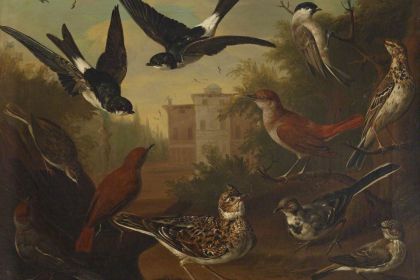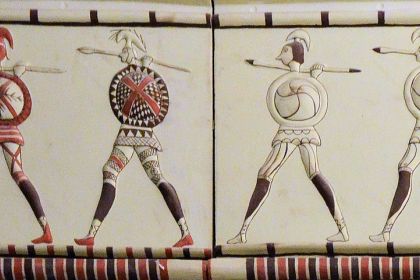Nature Sounds
Crickets choir: musical examples imitating rhythmic patterns of chorusing insects

Cricket
One of the most mesmerizing sounds in nature is the bizarre rhythmic patterns generated by chorusing insects. While scientists are still exploring this amazing ability of crickets and cicadas to synchronize their calls, composers and musicians create masterpieces imitating these natural choirs or simply incorporate insect recordings in their tracks.
According to numerous studies, chorusing insects generate three types of signals: syllable, chirp, and trill, all of which transmit information about species identity, sex, and location. It is usually males who make calls at distinct time intervals while other males adjust their own rhythm relative to that of their conspecific neighbors which leads to fascinating acoustic group displays.
The most surprising thing is the absence of a conductor in the choir of insects, and its synchronism, according to researchers, is provided by the neuronal network responsible for acoustic pattern generation of a signaler, and pattern recognition in receivers.
Like an unexplained phenomenon of a bird singing, scientists find it difficult to indicate the exact reasons that prompt crickets and other chorusing insects to organize their concerts. Some hypotheses are related to sexual selection and inter-male cooperation or competition, whereas others refer to the selection pressure exerted by natural predators.
Listen to the chorus of crickets on a summer night:
Download for free HQ soundscapes recorded in a mixed forest, including bird songs, cricket choruses, and night or afternoon thunderstorms.
One of the first known references to crickets in classical music belongs to the French Renaissance composer Josquin des Prez who, during his work at the Sforza court in Milan in the 1480s, wrote a polyphonic song El Grillo supposedly dedicated to his friend singer Carlo Grillo whose last name translates as the cricket.
El Grillo was written for four voices in the genre of the frottola, the predominant type of Italian popular secular song considered to be the predecessor of the madrigal. Imitating the rhythmic cricket motive with paired quarter notes, the song develops in a happy-humorous manner that causes the listener to laugh or at least smile.
Listen to Josquin des Prez's El Grillo performed by Vocal Appearance:
A notable step in the glorification of crickets was made by the German Baroque composer Georg Philipp Telemann who wrote an instrumental concerto in three movements, lavishly titled Grillen Symphonie.
In his manuscript, Telemann ironically noted that the piece was written in "the Italian, English, Scottish and Polish styles". What he meant by that is hardly the point, though it is clear that Grillen Symphonie has a very joyful mood and definitely contains rhythmic patterns inspired by crickets' trills.
Listen to Georg Philipp Telemann's Grillen Symphonie in G Major performed by Apollo's Fire:
It seems that crickets had come into difficult times during the Classical and Romantic periods since none of the composers indicated these insects in the titles of their works, although a famous work by Nikolai Rimsky-Korsakov imitating the flight of a bumblebee appeared.
In the era of sound recording, the cricket sound has become much easier to simply mix into music rather than to imitate it through vocals or musical instruments. One of the most famous examples of using cricket recordings in music appears in Abbey Road, the eleventh studio album by English rock band The Beatles. The idea to add nature sounds at the end of You Never Give Me Your Money came from Paul McCartney, but the producer George Martin extended the sound of crickets to the twenty-fifth second of Sun King while making the final mix.
Listen to Sun King by The Beatles:
Interestingly, the band's name is associated with insects as it comes from the word beetles in which one letter was replaced in order to get a double meaning. It is believed that the idea was inspired by the name of Buddy Holly's band The Crickets whose songs The Beatles often performed at their early concerts.




Listen to Nightingale solo song accompanied by crickets—2 hours of summer night nature sounds: